In this HFMA executive roundtable, six healthcare finance executives for hospitals and health systems share how the changes they implemented during the pandemic are transforming their workplaces and driving them to rethink how work gets done.
The coronavirus pandemic drove many employers, including health systems, to institute work-from-home policies for the first time ever, and two years later, significant numbers are making those changes permanent. In early 2022, Pew Research found that 59% of U.S. workers who say their jobs can mainly be done from home are working from home all or most of the time. This is a stark increase over the 23% who say they teleworked frequently before the coronavirus outbreak.
Two years ago, most remote workers said they were working from home because their offices were closed; but today, most say they are remote by choice. As employees’ work preferences have changed, and the healthcare industry struggles to cope with an ongoing labor shortage, many health system financial offices are working to boost recruitment and retention by making long-term remote work feasible.
In addition to facing the issues of managing a mostly remote revenue cycle team, the challenges of the past two years have also driven health systems to incorporate more automated processes to eliminate the need for hard-to-find workers.
What changes have you implemented at your organization since the pandemic that will continue even after the health crisis?
Tracy Porter: We, like many, shifted a lot of our staff to remote work. Our revenue cycle includes about 300 full-time employees, and almost every single revenue cycle team member is working from home. That presents a completely different dynamic of leadership and a completely different dynamic of accountability.
Infrastructure security measures had to be reevaluated and reestablished to be able to have measurements to allow our staff to be successful at home. When we started that process, I told all the leaders, ‘Teaching yourself how to be a leader for people that are remote may be one of the hardest things you ever have to do.’ Our system employees have always had their team members directly in front of them. They’ve never worked at home before. So it was a huge undertaking to learn new ways of leading while maintaining your required revenue cycle outcomes.
We established a core team of about 20 employees that would be on site, and we set up a lot of digital workflows. Team members at home who may be working a huge clinical denial can queue it up for the on-site documentation team to package for them and to get it to wherever it needs to be.
Terri Meier: We did the same thing. Remote work is going to be permanent for us at UC San Diego Health. But we allow some flexible scheduling, such as four ten-hour days. They can start at 7:30 a.m. Our phones don’t come on until 9 a.m., and they are there until 6 p.m. They can use that hour and a half in the morning to work at their work queues or follow up on patient calls or whatever they have to do. And we allow them to clock out, and clock back in, and [they] can work up until 9 p.m.
So then, your paycheck is whole, and we’re keeping [employees by offering them] a lot of flexibility. For us, it’s the employee experience plus the patient experience that creates your ROI. For my team, it’s been a real motivator that the organization is being so flexible to support them in being successful.
Beth Carlson: We were a little different because our staff have been mostly remote since 2019, so it wasn’t as traumatic for us to shift to fully remote during the pandemic. However, the shift did set in motion a needed reevaluation of our productivity and quality program. So, we spent a lot of time during COVID strengthening that program, monitoring productivity, establishing standards and quality audits.
We also recognized that when there is only a small number of people on site, you really start to assess the physical presence processes, like print and mail and how much is still being done through paper. I realized that’s a process that needs ongoing attention and can get messy. We were forced to make a lot of improvements toward eliminating paper but appreciate that it forced us into that.
Tom Yoesle: In addition to remote work, we’re seeing a lot of providers using more part-time workers. Many employees are looking for part-time work to achieve better work-life balance. We’re seeing health systems that are shifting to more part-time in some areas where the work can support that, and [they are] even offering benefits for part-timers. Traditionally, we wouldn’t have thought that was fiscally appropriate, but some are seeing that the benefits outweigh the costs of continued recruiting. With more part-timers, turnover is lower, and it’s easy to scale up when needed.
What are you doing to engage staff who are working in new ways?
Porter: We purchased a product to allow us to build our own digital education platforms. We were delivering education through videoconferencing and trying to capitalize on all the tools we could find. Through our research, we ended up taking on gamification for them to even have further engagement. They may not be sitting next to their teammate, but they can still initiate a challenge to their teammate.
Microsoft Teams is a very dynamic product that has a lot of attachments. We can initiate surveys to get employees’ opinions of different processes. And we required every single team to establish a group chat, and the leader of each team has to monitor that chat line every day and participate in it. I’m able to pop in and out of any chat group, so that always gets their attention. We’re using a lot of tools that keep employees engaged; they’re able to set up their own avatar, do challenges and make it almost a video game experience.
Meier: We practice lean strategies. So I have a morning huddle with my entire team at 8:10 a.m. and ensure that we’re ready for the day. And because we also allowed our team members to choose shifts, we have a huddle in the morning and a huddle at night, and then we have all kinds of process improvement projects. My team that’s CRCR-certified is working toward their lean yellow and green belts. We’re doing a lot of projects that engage them outside of answering the phone every day.
When we sent employees home, there had to be a measure of productivity. I don’t measure the number of calls they answered for the day; I measure the percentage of calls that they were ready to answer. If you’re not ready to answer the phone, then you’re not productive. So the customer service person doesn’t have to worry about meeting their 50 calls today, they just have to focus on getting through the current one. I give them time to take care of each patient by measuring their productivity a little differently. Because there’s some follow-up after each call, and they need time to do that, I’m only asking them to be 65% ready.
Stacie Zins: We were blended before pandemic, and most of my teams, including cash, are going to be transitioned into a four-day at-home, one-day on-site schedule that they’ll rotate. We converted a lot of payer enrollments to digital, so we do very little printing anymore. And the manual deposits our cash team handles are now like 2% of our volume coming in. We can take care of that with them rotating one day on site.
It was nice that we had established the four-one split prior to the pandemic and employees already had productivity and quality standards established at home. They would get pulled back in if they weren’t meeting the standards, and they’d have to go through a process to earn the opportunity to work remotely again. Now that we realize remote work is permanent, we’re struggling with what the trigger should be for returning to work. I have enough room that I could bring 30 or more back on site. I want to create a feeling that working at home is a privilege, not a necessity.
Yoesle: Revenue cycle and patient financial services [team members provide] the first, the last, the right impression. It’s important to tell your staff: You have to project the right impression every single time. You’re the first one, and you’re the last one.
How do you provide training for remote workers?
Meier: I created a superuser group of some of my higher functioning team members who want to continue to learn and grow within the department. They are my in-house trainers. When any of the team members are having questions or difficulties, they go to a superuser first.
Porter: We’re working with our IT department to deploy some software with our management team so they can go in and take over a team member’s PC when a team member needs help. So the team member can actually go stroke for stroke with them and show them the steps to take. We also have traveling trainers that have been to people’s houses in the area to be able to sit with them and teach them how to use our software.
In addition, we have customer service representatives go through case studies and scenarios where I role-play as the patient they are talking to. We’ve done extensive training with them.
Meier: We’ve incorporated more professional development to elevate the role of customer service. We’re really hiring knowledgeable workers. There are more minimum qualifications now to be a customer service representative because they’re the last impression on that patient, and it can make or break the patient relationship.
We’ve developed a career path as well. They can be customer service and they can become a lead worker, then an analyst and then a coordinator, then a manager. We’ve built in some pretty robust ways that they can stay within the department but develop themselves professionally. That also helps with retention.
I was recruited to UC San Diego from Stanford about five years ago, specifically to build their single billing office. And I brought a different philosophy about customer service. San Diego bought into my strategy. So my team members are the highest paid revenue cycle employees at San Diego. Customer service now is the destination job instead of where you get somebody from the temp agency, and as soon as a billing job opens up, they go to billing. So I’ve been there for five years, and I’ve had three employees retire. I’ve had nobody quit. So I’ve had zero turnover.
Are there other tools that you have implemented over the past two years that have been valuable investments for you?
Sheila Augustine: We are doing automated authorizations. We started with radiology. Our staff initially hated it and then thought we were firing all of them and this was going to replace all of them, but it’s not. We told them we like to transition people as we find efficiencies, and then we can move [them] to another area. We are not firing people. It’s worked great, so we’re continuing to expand it. Where we struggle right now is things have to be scheduled and a lot of our areas don’t schedule until it’s authorized, so the tool that we have [won’t work]. So we’re going to have to figure out another tool to use for [what’s] not being scheduled.
Certain products work better with certain payers. Some payers are very antiquated, and they can add hurdles to making the automation software work. You have to talk with your main payers because their portals can present barriers.
Carlson: We had to reevaluate our order build to solve for that as well because we did the same thing. We did implement claim status automation and now we’re exploring denials automation for proof of non-coverage and medical record requests.
We do build some of our own solutions but are being selective since we don’t have the internal analysts to make it scalable. If you become too dependent on the automation, then you put yourself at risk.
One lesson we learned is that not only do you need to upskill and retrain your staff because their jobs become harder, but you also need to train your leaders on how to manage an automated workforce. There is an increasing need for this new management skillset; it’s much more technical than a traditional billing office role.
Ryan Horn: We put a heavy investment into automation during the pandemic — just automating everything we can. We have about 50 bots right now doing stuff for us, but that was part of our strategy to do more with less. Especially as the Great Resignation set in, we started to see high vacancy rates in our departments. The bots are doing great, but now we need a person to manage the bots.
Needing someone to babysit the bots hurt the ROI a little bit, but we pay based on the success rate. We only pay if it was a successful transaction. It does the work and works queues for us. We also did a big centralization effort across all of revenue cycle. We realized a reduction of 60 full-time employees just doing that work. We were just trying to find a way to eliminate redundancy in the work, especially with authorizations. We have mostly all employed physicians, so the redundancy was insane. You have people working for the hospital just literally babysitting the practice, making sure they got their authorization.
Zins: Yes, the bots are great, but every time the payers update their website or Epic, you have to reprogram. So you lose time, and if something’s not right with the connection, then you have IT lift. And so in the cost analysis, we just kind of take that into account, and there’s not necessarily as much lift using the bots. [With] some of the other pieces that Epic has launched, you can integrate and control yourself. So we’re working more that way, a repair platform. We also went through our contract management team to make sure that everybody was up on portals, that all the faxes and mail we were receiving from the payers was digitized. So the staff can work it from home. They’re not having to print anything, and it just goes back out. So we actually reduce a lot of paper costs and save the trees.
Panelists
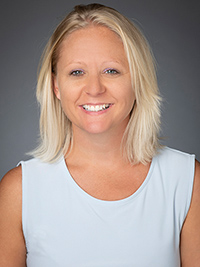
SHEILA AUGUSTINE
Director of patient financial services for Nebraska Medical in Omaha, Nebraska
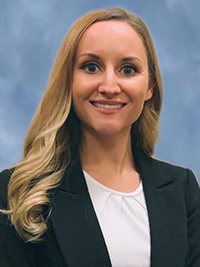
BETH CARLSON
Senior enterprise director of patient financial services for West Virginia University Medicine in Morgantown, West Virginia
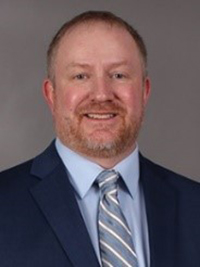
RYAN HORN
Vice president of revenue cycle for Bronson Healthcare Group in Kalamazoo, Michigan
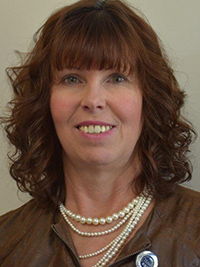
TERRI MEIER
Director of system patient revenue cycle for UC San Diego Health in San Diego, California
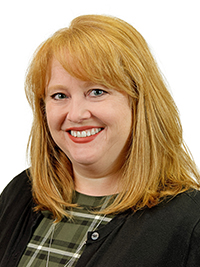
TRACY PORTER
Executive director of patient financial services for Baptist Health Care in Pensacola, Florida
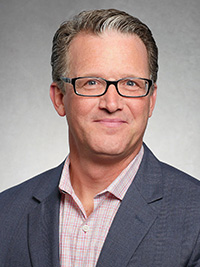
TOM YOESLE
Chief experience officer of the customer service operations division for Parallon in Nashville, Tennessee
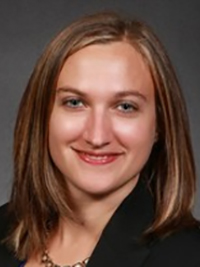
STACIE ZINS
Director of patient financial services for North Memorial Health Hospital in Robbinsdale, Minnesota
About Parallon
Parallon is a leading provider of healthcare revenue cycle management services. With a long track record of operational excellence, Parallon brings extensive knowledge and a broad portfolio of custom solutions to every partnership. Parallon enables providers to care for and improve the health of their communities by optimizing financial performance, navigating regulatory challenges, providing operational best practices and leveraging the latest technology. Parallon has over 17,000 colleagues and serves close to 1,000 hospitals and 3,000 physician practices. Parallon is headquartered in Nashville, Tennessee, with operational locations across the country. For more information about Parallon, visit parallon.com.
This published piece is provided solely for informational purposes. HFMA does not endorse the published material or warrant or guarantee its accuracy. The statements and opinions by participants are those of the participants and not those of HFMA. References to commercial manufacturers, vendors, products, or services that may appear do not constitute endorsements by HFMA.






